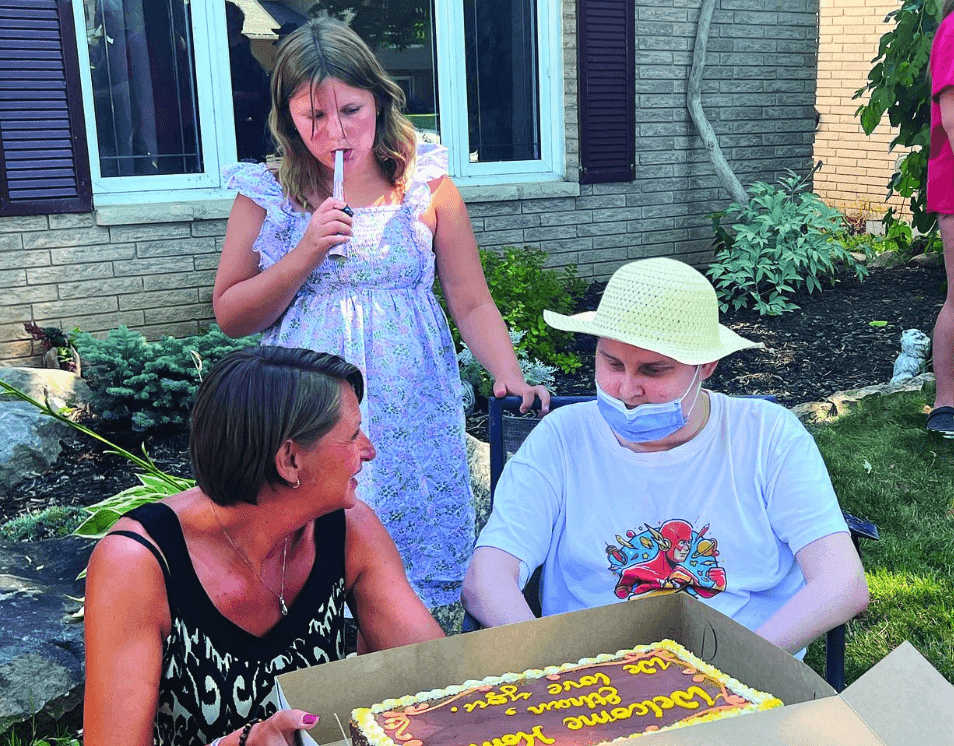By Sylene Argent, Local Journalism Initiative Reporter, Essex Free Press
With National Drowning Prevention Week kicking-off on Sunday, July 20, the Town of Essex hosted a Water Safety Day down at the Colchester Harbour and Beach.
The informational event aimed to arm individuals and families with tips to help keep safe in and around water by learning how to prevent incidents, recognizing hazards, and putting safety first.
National Drowning Prevention Week takes place annually during the third-week of July. The Lifesaving Society designates this recognition to bring attention to drowning prevention.
This year’s recognition week will take place July 20-26, with the “Safer Together” theme.
During the event, individuals and families were able to visit various stations set up throughout the site, each providing a different tip or piece of information on how to be safe around the water. Each station was manned by different organizations, such as the Town of Essex and the Swim and Lifesaving Club, Essex Fire & Rescue Services, the OPP, and the Guardian Marine Rescue.
Dan Metcalfe is part of the Windsor-Essex County Drowning Prevention and Water Safety Coalition, and is also the Emergency Measures Coordinator for the County of Essex. He hosted one of the booths onsite, noting he tries to attend several events to promote water safety throughout the season.
The County of Essex works closely with a number of partners to promote water safety and prevent injuries in the water, including local police, fire, EMS, Canadian Navy, Coast Guard and Auxiliary, Windsor Port Authority, and others.
The County of Essex is also a member of the Great Lakes Water Safety Consortium, and leads the Windsor-Essex County Drowning Prevention and Water Safety Coalition.
He reiterated the importance of being smart around the water and to recognize potential risks or hazards. One way to do so is to sign youths up for swimming lessons. In addition, swimmers should stay within an arm’s reach of children swimming, always have someone on duty to supervise water activities, wear a properly fitted and approved lifejacket when in a boat, use the buddy system, be on the lookout for potential hazards, and respect currents in lakes and open water, as they can change.
Having respect for the water is paramount.
Currents in lakes, and in piers, can change, which can put swimmers at risk, he said.
Metcalfe also noted there are two currents that meet at Sand Point Beach in Windsor, which form a whirlpool and can be dangerous to swimmers. He also spoke of there being two currents at Point Pelee that can also put swimmers at risk.
It is important to pay attention to signage when visiting water areas, to be aware of any dangers, he added.
He also spoke of how storms can move sandbars from where swimmers may have become used to them being located.
For Mayor Sherry Bondy, promoting this day of recognition was important, knowing all of the local municipalities are surrounded by water. It is important to take the time every year to provide important education to the public about water safety around pools and beaches.
Having a municipality with shoreline, residents take part in water and beach activities, Bondy added, reaffirming the need to reiterate safety procedures and things that can be overlooked but can be crucial to being smart around the water.
Bondy spoke of drownings that have taken place at Sand Point Beach in Windsor and the need to ensure that does not happen again.
“It was great to see people out at the Water Safety Day, and the different groups coming together to participate, such as the OPP Rescue Boat [team] and hear how they respond,” Bondy added. She was also glad to see members of the Guardian Marine Rescue team, which operates rescue boats in Colchester Harbour and Belle River. Bondy noted they are always looking for donations and members. To learn more, log onto https://www.guardianmarinerescue.ca/
Recently, Bondy brought the matter of water safety up at Essex County Council, wondering if it would be possible to raise a flag to recognize the upcoming National Drowning Prevention Week. It was noted the County did not have a flag to raise, but would double down on the messaging this year.


